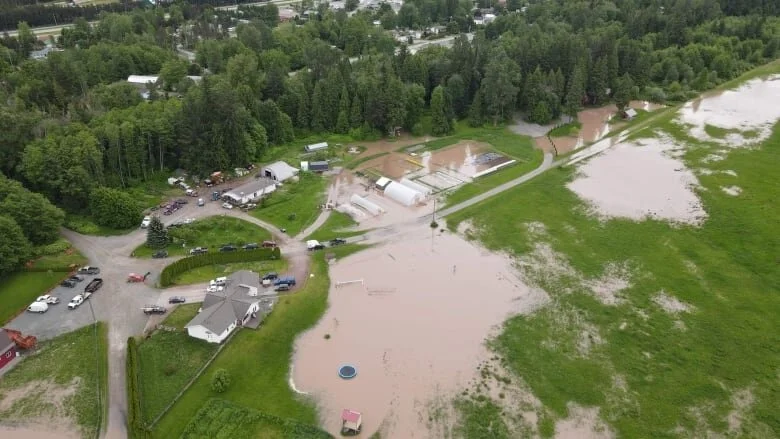The water supplied to 18 Garden Bay area homes is under a “do not use” warning from Vancouver Coastal Health (VCH) as of Nov. 4. Dream Valley Estates residents were notified by VCH that slightly elevated arsenic levels were detected in Sept. 28 water supply samples. Health Canada’s maximum acceptable concentration (MAC) for arsenic in drinking water is 10 parts per billion (ppb). Two of three Dream Valley samples tested at 11.3 and 11.6 ppb. One of those samples tested raw water and one was on treated water.
UBCO looks at smart technology to safeguard drinking water
Delivery of safe and high-quality drinking water is an essential public service, but it’s not easy to monitor water quality in real-time close to customers’ homes. Thanks to a new research partnership with the Natural Sciences and Engineering Research Council of Canada, TELUS and the Regional District of North Okanagan, researchers at UBC’s Okanagan campus will begin to address this gap by leveraging new sensors to wirelessly monitor water quality in the distribution system.
Residents fear homes, farmland in Ontario's Hillman Marsh area will go under water without federal help
Residents, environmentalists and the mayor of Leamington, Ont., say homes and businesses are at severe risk while Ottawa considers an application for millions of dollars to help protect the Hillman Marsh Conservation Area on the Point Pelee peninsula against Lake Erie flooding. Wayne King, founder of the Leamington Shoreline Association, says immediate action is needed to prevent the possibility of destructive flooding in the southwestern Ontario community. "There's 500 homes and businesses out there that would be under water," he said.
Many B.C. residents struggling as flood relief funds are slow to come
Just off the TransCanada Highway in Abbotsford, B.C., dozens of businesses and hundreds of homes were destroyed in the devastating flooding from late last year and have not yet received any financial assistance. At the peak of the emergency, nearly 15,000 people fled their homes as floodwaters shut down major highways and destroyed vast farmland. “You know everybody’s got similar stories, traumatic stories,” Arthur Deleeuw, a victim of the floods, told CTV National News.
Higher levels of organic pollutants found in homes located near natural gas wells: U of T study
A University of Toronto study has found that those living close to natural gas wells are exposed to higher levels of certain organic pollutants in their homes. The study looked at levels of volatile organic compounds (VOCs) found in the air and drinking water in homes of pregnant women living in a region of northeastern British Columbia. “There’s very little research about indoor air quality in regions with a lot of unconventional natural gas exploitation,” says Élyse Caron-Beaudoin, an assistant professor in the department of health and society at U of T Scarborough and lead author of the study.
Flooding evacuation orders rescinded as Skeena River recedes
More than 100 property owners living along one of northwestern B.C.'s largest river systems are allowed to return to their homes following evacuation orders due to flooding late last week. Water levels in the Skeena River and its Kalum River tributary have dropped significantly over the past few days, meaning residents will be allowed back into New Remo, Old Remo and Dutch Valley, the Regional District of Kitimat-Stikine said Monday in a release. Emergency officials say 47 homes and buildings were damaged by flood waters.
'My entire community was under water': Most homes in Jean Marie River damaged during flood
Twenty-two homes in Jean Marie River have been damaged by water and contaminated with fuel after the Mackenzie River flooded the N.W.T. community on both Friday and Saturday nights, according to the community's chief. Chief Stanley Sanguez told CBC News the band office and the school — in the lower lying downtown area — were also affected. The community of fewer than 100 people only has 26 homes in it, he said. "The water went so high that it uprooted all the fuel tanks, you could literally smell diesel all over," he explained. "The fuel that got into the houses is going to embed right in the lumber. It [doesn't] matter how you wash it, you'll still have that smell." When the water came Friday night, it came quickly.
Family goes without running water to simulate what it's like to live with unsafe tap water as many Indigenous people do
Gordie Hanna says the last week highlighted to them that we really do take the convenience of tap water for granted. The Cambridge resident tells 570 NEWS that the other takeaway was "that people shouldn't have to do this in Canada ... anywhere." He figures they went through 130 litres of water in seven days. Hanna says "We didn't realize just how much we use, and how much we enjoy the quick and easy convenience," of turning on the tap and getting warm water for things like doing dishes.
Water treatment plant to be completed on First Nation in northern Ontario next year
Batchewana First Nation members have received some welcome news. It was announced this past week that a ground-breaking ceremony was staged for a water treatment plant expected to be fully functional on the First Nation in northern Ontario by the end of 2021. “They’re happy,” Chief Dean Sayers said of the Batchewana First Nation members who will have access to clean drinking water in their homes.











